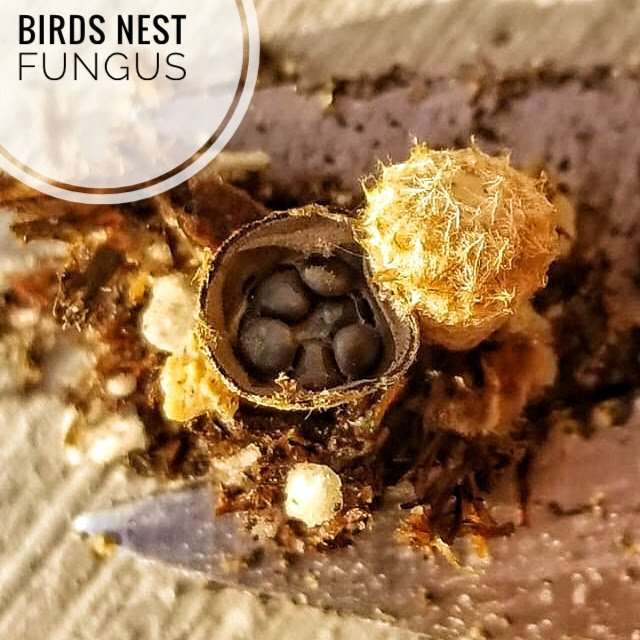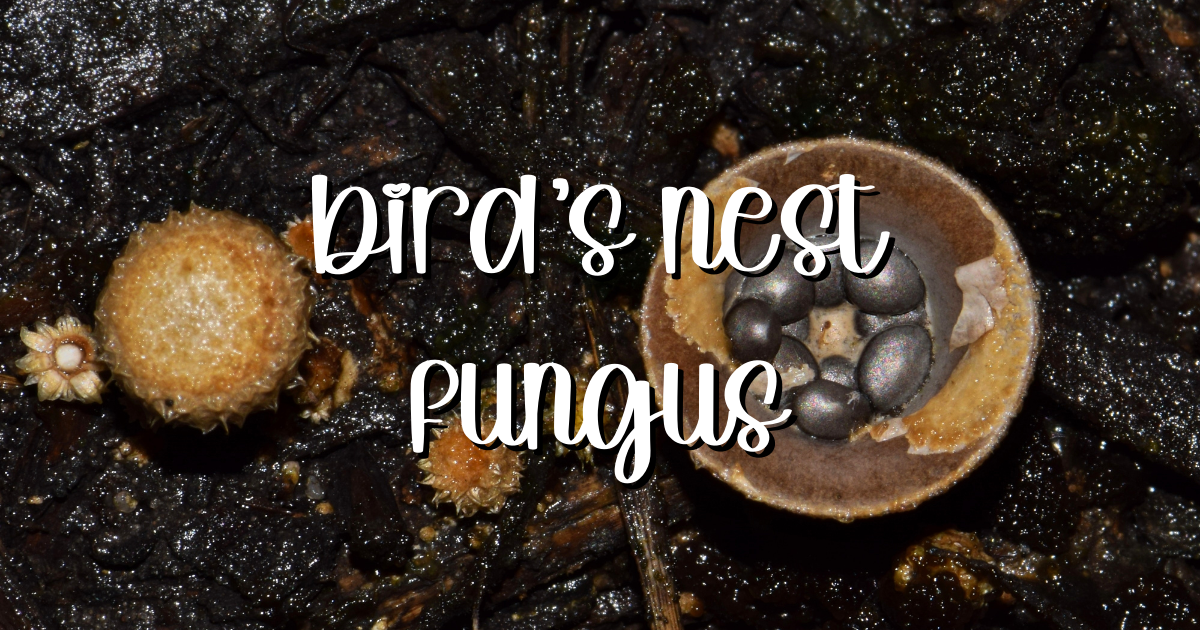Bird’s nest fungus, also known as Nidulariaceae, is a unique type of fungus commonly found in succulent soil. While its appearance may seem alarming, it is actually a beneficial organism that can contribute to the health of your succulent plants. I completely FREAKED out when I found this in one of my pots. I wouldn’t touch it with my hands, so you’ll see me holding it with scissors. Anyways, here are five important facts to know about bird’s nest fungus in succulent soil.

Appearance and Identification
Bird’s nest fungus has a distinctive appearance, resembling small bird nests with eggs inside. The fungus grows in clusters, with each “nest” measuring around 2-5mm in diameter. The nests are cup-shaped and have a tan or brown color. Inside each cup, there are small egg-shaped structures, known as peridioles, which contain spores that help the fungus reproduce.
Benefits of Bird’s Nest Fungus in Succulent Soil
Bird’s nest fungus may seem unattractive, but it can actually benefit your succulent soil. This fungus has a knack for breaking down organic material in the soil, which improves the nutrient content for your succulent plants. The fungus can also work to improve soil structure by binding soil particles together. This helps prevent soil erosion and enables the soil to retain more water. So, while it might not look appealing, bird’s nest fungus is actually a useful addition to your succulent soil.

You might also like: Succulent Soil: Ultimate Guide & 4 DIY Recipes to Keep Your Succulents Happy and Healthy
Conditions Favorable for Bird’s Nest Fungus Growth
Bird’s nest fungus loves to grow in moist and humid environments, which makes succulent soil that has been overwatered a prime target. It also likes soil that’s rich in organic matter, such as soil containing decaying leaves or wood chips.
You might also like: How & When to Water Succulents So They Don’t Die
But here’s the good news: seeing bird’s nest fungus in your succulent soil is actually a sign that your plant roots are doing well and actively growing! As the fungus breaks down organic matter, it releases nutrients that can help nourish and stimulate new root growth. So, while it may not look pretty, bird’s nest fungus is actually a beneficial addition to your succulent soil.

Prevention and Control
While bird’s nest fungus is generally not harmful to succulent plants, some growers may prefer to remove it for aesthetic reasons. The best way to prevent its growth is to avoid overwatering your succulent plants and to maintain good soil drainage. If you do notice bird’s nest fungus in your succulent soil, you can easily remove it by gently pulling the nests out and disposing of them in the trash.
Other Interesting Facts
Bird’s nest fungus is not exclusive to succulent soil; it can also be found in forest floors, mulch, and other organic materials. The fungus has been used in traditional medicine to treat skin diseases and has also been studied for its potential use in bioremediation to clean up contaminated soils.
Fungi are like the superheroes of the soil, helping plants grow and keeping them healthy by protecting them from pests and diseases. And this doesn’t just go for succulents but for all plants! They’re also like nature’s recyclers, breaking down dead plant matter and returning the nutrients back to the soil for future generations of plants to use.
The relationship between fungi and plants is so strong that it’s been around for millions of years! That’s right, these two have been working together for ages.
Believe it or not, some types of bird’s nest fungus are actually used as food in some parts of the world!
Bird’s nest fungus is not always a bad thing.
Bird’s nest fungus is a common occurrence in nature, and can be beneficial to the ecosystem. Bird’s nest fungus looks like birds nests and mimics them to attract insects that are preyed upon by birds. The insects are attracted by the smell of bird droppings, which contain nitrogen and other nutrients needed for their survival as they feed on seeds or plants growing near the ground. This kind of fungus is a sign that your soil is healthy!

Where to Buy Succulents Online


